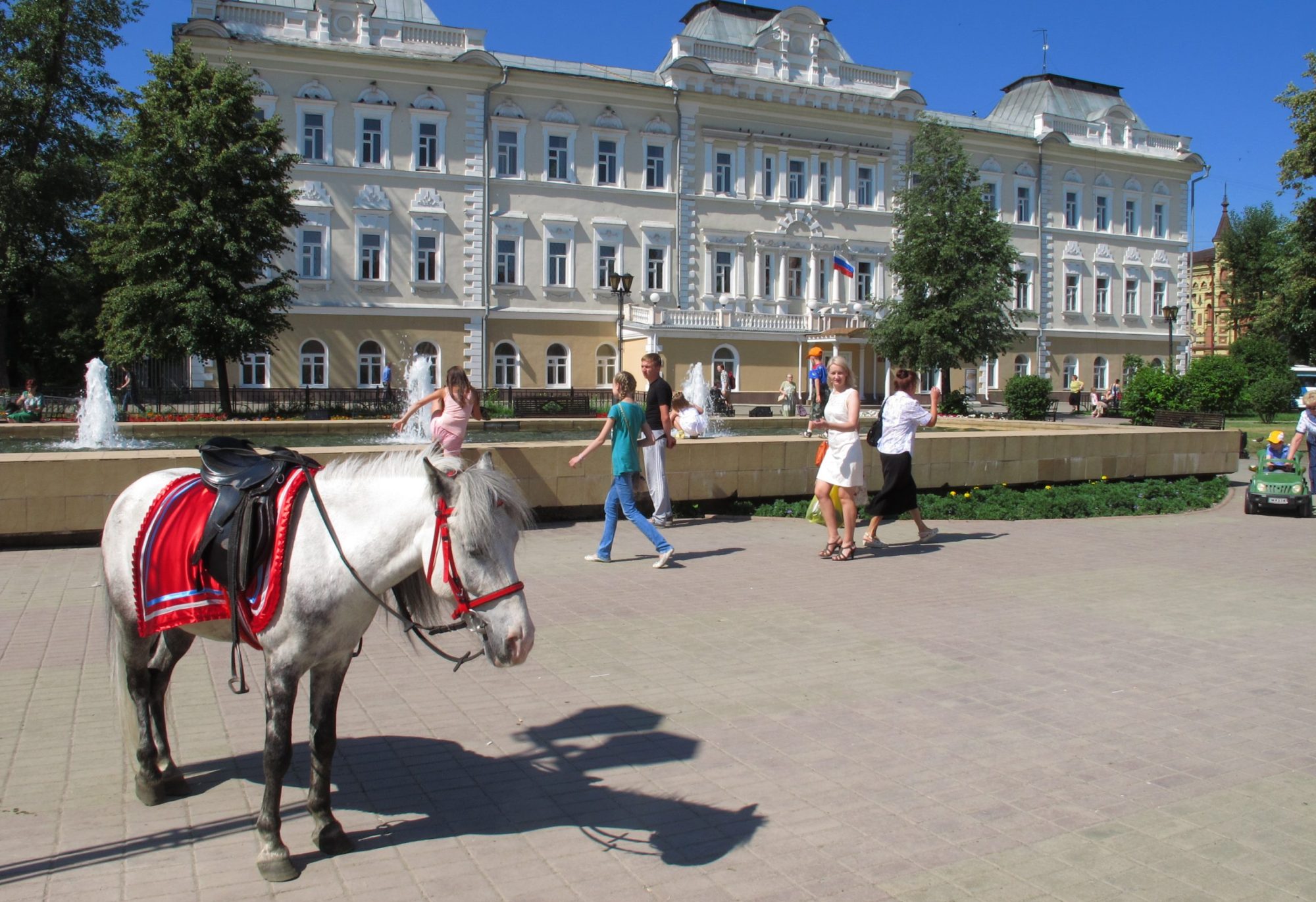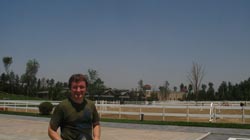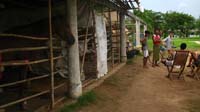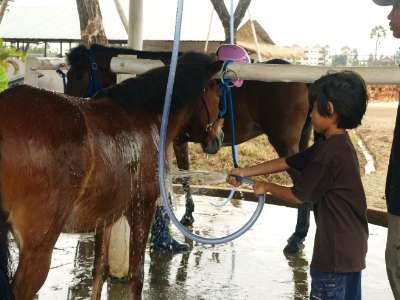The next China Equestrian Expo/China Horse Fair is coming up: October 24, 25.
This year UK-based exhibition company Tarsus will mount the show, at Beijing’s International Exhibition centre – the one next to the National Stadium/Bird’s Nest.
E-flyers and sms alerts have already been sent, which suggests a new level of professionalism in the 2009 edition of the show. It will be interesting to see who’s got the budget to travel. It will also be interesting to see what kind of numbers and shape the myriad local exhibitors/manufacturers of horse tack and rider wear will appear in. These firms are usually very export-dependent and will surely have been among the small and medium manufacturing firms which took a hammering in the past year as exports to economically depressed Western countries tumble. One imagines equestrian clubs are badly affected as consumers cut spending and non-essentials. But equestrian clubs in China have continued to multiply and more established clubs are expanding. Will locals – clubs as well as tack makers – take up the space likely to be left empty by European equestrian firms missing this year’s show? Or will the Europeans merely show up in ever greater numbers as they seek sales elsewhere for their horses and equestrian equipment?

One definite attendee will be the US Livestock Genetics Export (USLGE) Corp, which will be showcasing American Quarter Horse and Appaloosa breeding to Chinese visitors. Among those, according to Tarsus, will be local polo club Reignwood Pine Valley, seeking veterinary and nutrition products and services, says general manager Xu Ying Jie. A local equestrian club quoted by Tarsus in its press release, the Yan Long is a new one to me but I look forward to learning more about it soon.
See more at www.chinahorsefair.com.cn





 riding school nearly a decade in business, is doing alright: having added new stables and outdoor arenas they’re currently building a new clubhouse for members.
riding school nearly a decade in business, is doing alright: having added new stables and outdoor arenas they’re currently building a new clubhouse for members. 
